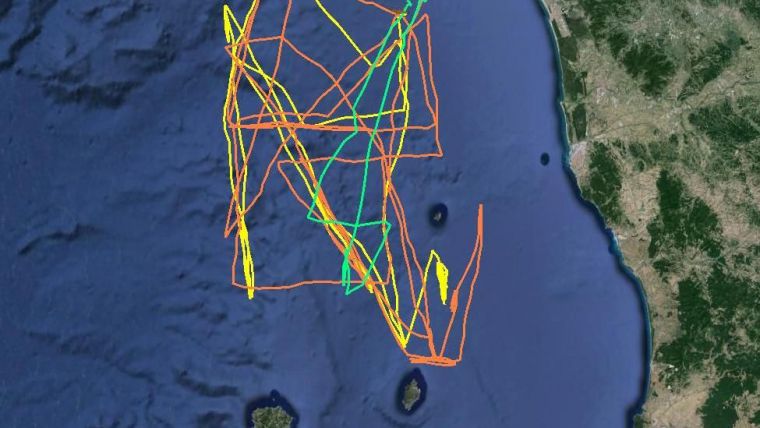Considerable Water Temperature Increase in the Ligurian Sea
A surprisingly high temperature increase at intermediate depths (around 200m) in the Ligurian Sea, between Corsica Island and the Liguria-Tuscany coast, was detected by CMRE gliders during the recent LOGMEC (Long-term Glider Missions for Environmental Characterisation) environmental campaign. The campaign also marked the longest ever uninterrupted CMRE deployment in Italian waters: 55 days and 1454 nautical miles covered by three gliders.
The LOGMEC preliminary results reveal temperature increases at around 200m depth with values 0.5-1.0 °C above those previously measured between 1970 and 2014. Early analysis of wider area data appears to indicate that this anomalous warming event could have been caused by the boost in temperature of intermediate waters coming from the Tyrrhenian Sea and originating in the Eastern Mediterranean. At deeper levels, the data also confirmed the recently discovered rising trend of temperature and salinity levels of the Levantine Intermediate Waters (LIW, coming from the Eastern Mediterranean). If confirmed, these results would demonstrate that in some years time the climate variability of the Eastern Mediterranean could influence the North-Western Mediterranean Sea, with impacts on intermediate and deep waters (and, consequently, on marine ecosystems), more heavily than previously assumed.
Glider Operations for Oceanographic Data Collection
LOGMEC is an acoustical and oceanographic campaign of the NATO Centre for Maritime Research and Experimentation (CMRE) aimed at studying variability and predictability of acoustical and oceanographic characteristics of the ocean environment. The LOGMEC16 sea trial was conducted in the Ligurian Sea from 1 May to 30 June 2016. The gliders were operating autonomously and were supported for two short periods by the Coastal Research Vessel Leonardo, operated by the Italian Navy for CMRE. The campaign included researchers from several NATO nations and institutions such as CLS (France), DSTL (UK), INGV (Italy), ISMAR (Italy), MIT (USA), MWC (UK), OGS (Italy), ONR (USA), UEA (UK), UNIBO (Italy), USAM (Italy).
Real-time Data Access
Data from gliders operating during LOGMEC were also integrated for the first time in near real-time in NATO and national command and control (C2) systems at the Coalition Warrior Interoperability eXploration, eXperimentation, eXamination, eXercise (CWIX) event held in June at the Joint Force Training Centre (JFTC) in Bydgoszcz, Poland (2,000km away). This experimentation aimed at demonstrating Robotic Network solutions to support NATO navies.
During the campaign, contact was lost with one of the gliders. A new deployment was then implemented to guarantee continuity of the data flow. All the field activities were conducted thanks to and in coordination with the Italian Navy, and in particular with the Marina Nord command.

Value staying current with hydrography?
Stay on the map with our expertly curated newsletters.
We provide educational insights, industry updates, and inspiring stories from the world of hydrography to help you learn, grow, and navigate your field with confidence. Don't miss out - subscribe today and ensure you're always informed, educated, and inspired by the latest in hydrographic technology and research.
Choose your newsletter(s)
























